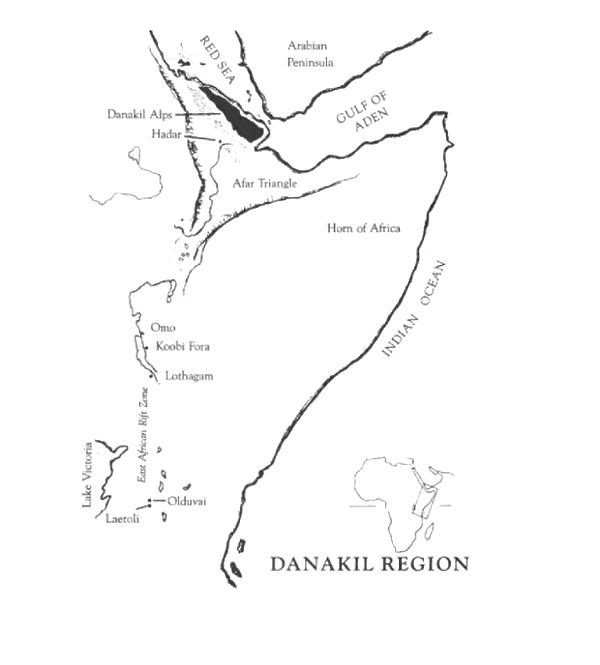The ancestors of the human species, Australopithecus afarensis, evolved in an open grassland, in a region that was dominated by rain forests much like in Kongo today. How does an open grassland find a niche in a forested region, where it would easily be overgrown by arboreal vegetation?
The coast-line of Danakil as an open grasslands environment
The Danakil block separated from Ethiopia around 6 million years ago[1, 2], and a coast line formed from faulting of the the block, much like how the coast on Crete has formed,[3] on which erosion from wind that came in from the Sea of Afar maintained a largely treeless open grasslands landscape, where the grazing horse speciated[4] as well as the waterbuck[5] and Australopithecus afarensis.[6]


Synapses
T. Kidane. Strong clockwise block rotation of the ali-sabieh/a ̈ısha block: evidence for opening of the afar depression by a ‘saloon-door’ mechanism. Geological Society, London, Special Publications, 420(1):209–219, 2016. ISSN 0305-8719. doi: 10.1144/SP420.10. URL http://sp.lyellcollection.org/content/420/1/209
La Lumiere, L. P. “Evolution of Human Bipedalism: A Hypothesis About Where It Happened.” Philosophical Transactions of the Royal Society of London. Series B, Biological Sciences, vol. 292, no. 1057, 1981, pp. 103–107. JSTOR, JSTOR, www.jstor.org/stable/2398648.
R. Caputo, S. Catalano, C. Monaco, G. Romagnoli, G. Tortorici, and L. Tortorici. Active faulting on the island of crete (greece). Geophysical Journal International, 183(1):111–126, 2010. doi: 10.1111/j.1365- 246X.2010.04749.x. URL http://dx.doi.org/10.1111/j.1365-246X.2010.04749.x.
Bernor, R. L., Gilbert, H., Semprebon, G. M., Simpson, S., & Semaw, S. (2013). Eurygnathohippus woldegabrieli, sp. nov. (Perissodactyla, Mammalia), from the middle Pliocene of Aramis, Ethiopia. Journal of Vertebrate Paleontology, 33(6), 1472–1485. https://doi.org/10.1080/02724634.2013.829741
Vrba, E. S. (2006). A possible ancestor of the living waterbuck and lechwes:Kobus basilcookeisp. nov. (Reduncini, Bovidae, Artiodactyla) from the Early Pliocene of the Middle Awash, Ethiopia. Transactions of the Royal Society of South Africa, 61(2), 63–74. https://doi.org/10.1080/00359190609519954
Johanson, D. White, Y. Coppens. (1978) A new species of the genus Australopithecus (Primates: Hominidae) from the Pliocene of eastern Africa. Kirtlandia 28, 1–14
very interesting details you shared about it
Downvoting a post can decrease pending rewards and make it less visible. Common reasons:
Submit
amazing photography...the hill looking so beautiful.....i waiting for your next post..
Downvoting a post can decrease pending rewards and make it less visible. Common reasons:
Submit